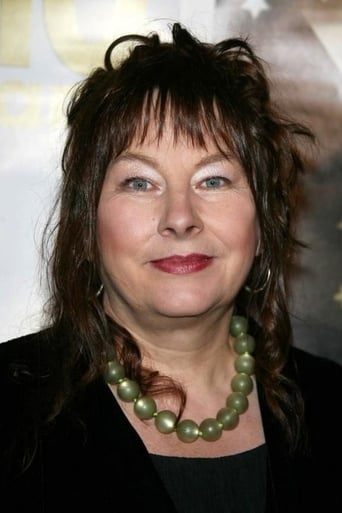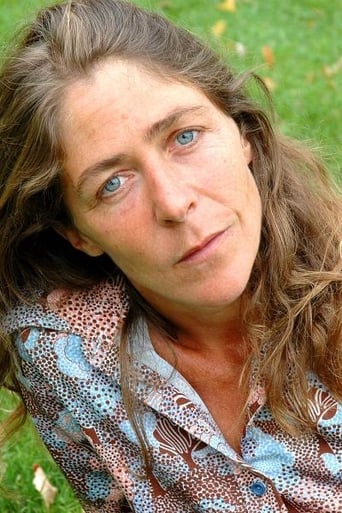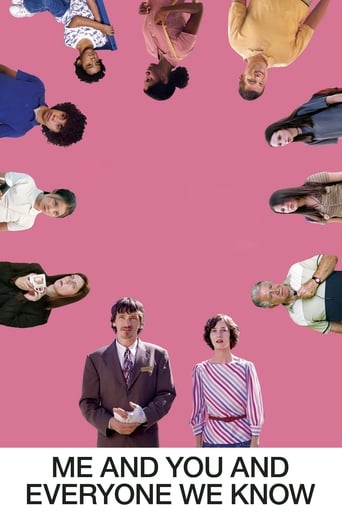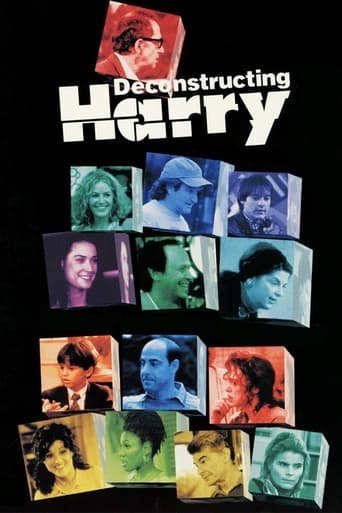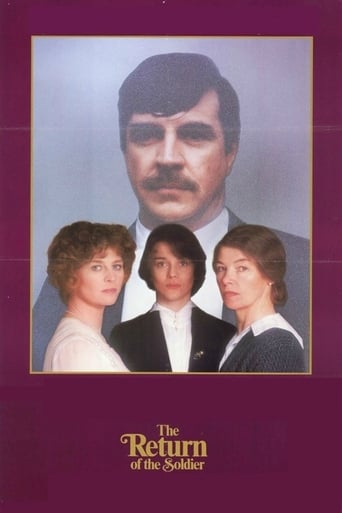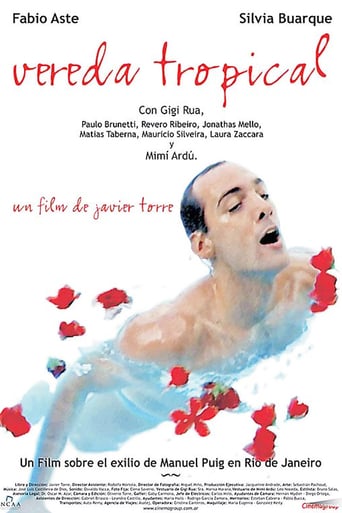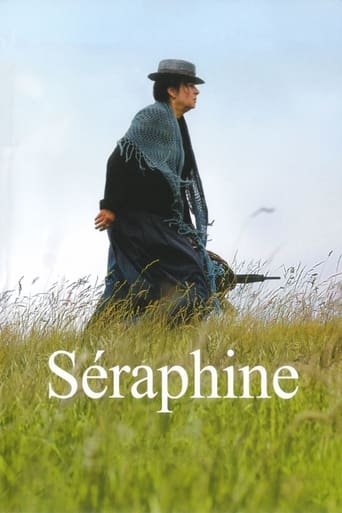
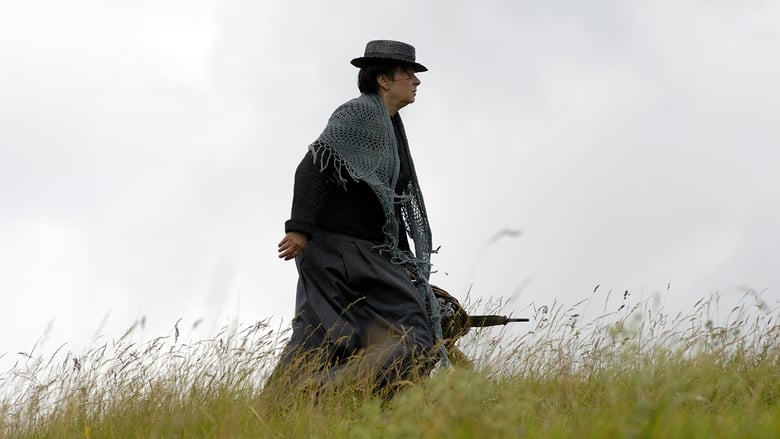
Séraphine (2008)
The tragic story of French naïve painter Séraphine Louis aka Séraphine de Senlis (1864-1942), a humble servant who becomes a gifted self-taught painter. Discovered by prominent critic and collector William Uhde, she came to prominence between the wars grouped with other naïve painters like Henri Rouseau only to descend into madness and obscurity with the onset of Great Depression and World War II.
Watch Trailer
Cast


Similar titles
Reviews
Yolande Moreau, magnificent in the role of a lifetime, and Laurent Brunet's stunning photography provide - along with the artworks of Seraphine herself - reasons enough to see this film. Overall, the simple-story-simply-told feel of the movie started to loosen its grip on me at the start of its second hour. I think this may have been because the screenplay spends so much time on Uhde's rediscovery of Seraphine at that point, after the disruption of WW1. I mean no disrespect to Ulrich Tukur, who is terrific as Uhde, but I don't think it was the best use of screen time. Did we really need to dwell on someone arriving in Chantilly by car, having Uhde pick that person up in his own car, have the person - who turns out to be a journalist - interview Uhde at some length? It was interesting without being necessary, and contributed to a real dip in the movie's energy. Once Ms Moreau reappeared the film was on course again. Maybe, then, we did have to leave her in order to return to her, but in my view the time away was not handled well. Hence 6 out of 10 for a work that, on the basis of its central performance and its cinematography, and indeed on the merits of its remarkable first hour, might have reached even greater heights.
Portrayal of primitive modern artist Seraphine de Senlis.It is a good story. I have to say I don't like her paintings, while watching the movie went on line to look at them. Most of what I have read about primitive painters is that these fantastic "discoveries" turn out to be mostly duds--instilling false hopes in these poor artists.At one point in the movie someone viewing her art said the flowers looked like cut flesh. That isn't that far off--they are psychologically disturbing to look at. Van Gogh was psychotic but grounded in what beautiful art is---plus there are a zillion manifestations of psychosis. Well done movie on mental illness and early twentieth century life although I hardly think someone needs to be locked up for wandering around town doing strange things in a wedding dress.The actress puts in a first class performance.Good intelligent adult movie.
Cinema is a language of deception. The set we see, the mise-en-scene, is what the director wants us to see. Conditioning us visually before an actor even speaks their lines. In costume dramas, the historical clothing is a further weapon to impress a specific artistic vision on us, further cloaking any subtext, whether the transformation of a marriage market story into 'rom-com' (Pride & Prejudice) or consciously travestying the past (Moulin Rouge!, Marie Antoinette). French cinema has achieved respected and less controversial use of costume with films like Jean de Florette and Manon des sources. In these examples, beautiful, nostalgic settings were contrasted with dystopian visions of the hard life. When we move to the biopic, cinematic techniques are routinely used to persuade us of 'what really happened.' Séraphine continues the proud French tradition of costume and historical drama, yet in a very accessible vein. It tells the (true) story of a minor French painter, Séraphine Louis (later known as Séraphine de Senlis, after the village where she lived.) Our story picks up Séraphine working as a maid for Madame Duphot. This lady of the house also rents an apartment to a German art critic-dealer, Wilhelm Uhde. Uhde believes in the 'primitive' artists and takes a liking to some of the maid's work he spots. Yolande Moreau's assured performance gives weight to what may be an unvarnished account. The discovery of the peasant woman's talent, her humble charm as she goes about collecting the ingredients for paint (wine, mud, fruits, flowers) as she goes about her chores as a domestic servant. Everything draws us sympathetically into Séraphine's world.Udhe nurtures Séraphine's embryonic talent, ensuring it is seen worldwide. But as war hits the economy, support evaporates. Séraphine's inner voices of inspiration lead her to psychosis and she meets her demise in an insane asylum.The painting itself is of the so-called 'naïve' style, characterized by childlike simplicity. (One of the most famous exponents, according to some, is L. S. Lowry.) The style seems natural to the childlike (if brilliant) personality of our peasant woman, although of course many naive art painters, including Lowry had, unlike Séraphine, plenty of schooling and formal knowledge of art technique.Production values in the film are high all round. Costume, acting, direction, all achieve a high standard, as evidenced by the many awards heaped on it in its own country. The overall effect is touching without being sentimental.Séraphine is a continuation of one woman's barely recognised legacy. Any subtext is about serving up a fine character from France's past, a commemoration of national greatness from the early 20th century. (Visits to the exhibition of her work in Senlis have, predictably, quadrupled since the release of the film.) If there is any ideological weakness, it is simply that held by the character herself, a Christian attitude of sacrifice and acceptance of fate. There is no strong judgement on whether Séraphine could have lived her life differently. No real analysis of her painting style. It is, after all, a classy and enchanting fairy tale hung on the hook of a historical person, a harmless deception perhaps. The viewer, should she or he wish, can make their own judgement. Just as they can on the deeply religious and fairly distinctive artworks she left for posterity.
Seraphine Louis,who would eventually change her name to Seraphine deSenlis (after the name of her hometown)was an artist who cleaned houses by day,and painted by night (all the time while singing the hymns of her staunch Catholic upbringing,while she was growing up an orphan by Nuns). Seraphine is pretty much maligned by the village locals,taunted by children,and pretty much avoided by most all that know her. When German art collector & critic,Wilhelm Uhde rents a room in the town of Senlis,while on the run from the insanity of World War I,and discovers a painting by Seraphine & is amazed by it's use of colour & texture. When the war moves ever closer,Uhde & his sister escapes the madness. Years later,he returns to Senlis,rediscovers an aged,but still painting Seraphine & vows to put her work on display (despite the fallout of the Wall Street crash of 1929,as well as the subsequent great depression,that managed to cripple a good percentage of Europe's economy,as well). Martin Provost directs & co writes (with Marc Abdelnoir)a lovingly depicted portrait of a woman possessed of genius that is cruelly stolen too early (deSenlis spent her aged years in an insane asylum & never painted again in life). Yolande Moreau plays Seraphine,a woman unpossesed by pretentious,real fine. Ulrich Tukur plays Wilhelm Uhde,in a winning role that depicts Uhde as an impresario of art first,and who's personal life is down played,somewhat (in life,Uhde was an ardent homosexual that made no bones about his gay lifestyle). The photography is a real treat for the eye (at times,the composition of visual images are very painterly,such as films such as 'Tous Le Matin Du Monde'). A film to check out for those with a love of art,or art history (or both). Spoken in French & German with English subtitles. Not rated by the MPAA,this film contains flashes of nudity & adult content.


